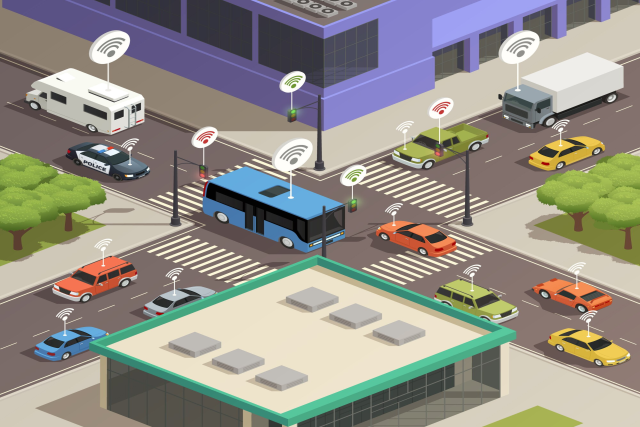
The smart transportation system has had a great deal of the direction towards the desire of traffic congestion to be overcome, aiding to increase safety, and also to use energy efficiently. But the implementation of these systems is really problematic and these issues must be resolved in urban and rural areas alike. To be more specific, disregarding major challenges such as the high cost of infrastructure and regulatory has the potential of being a real setback to a city's growth. However, obstacles also provide great chances that enable an easier and healthier transport system to be built.
Infrastructure Costs
Investment in smart transportation technology, including sensors, big data analytics, and communication networks, is significant. High infrastructure costs present one of the biggest barriers to implementation, particularly for governments and organizations with limited budgets in regions where the economy is in a struggling phase.
Solution: By involving private stakeholders, the government can alleviate some pressure on finances through public-private partnerships (PPPs). In cooperation with the private sector, public transit systems can, to some extent, share investment and risk assessment expenditures. Moreover, cities are eligible for national and foreign funds that promote florishing cities and mobility. There are additional benefits in doing pilot projects in selected regions before embarking on a full scale project.
Cybersecurity in Systems and Networks
Data and networks are undergoing integration and along with that, cyber threats are also increasing. These systems can be hacked and can possibly disrupt the safety, privacy, and the overall systems efficiency of an individual. The risks are far grave considering that there is all encompass GPS system integration with autonomous cars and smart traffic lights.
Solution: Multi layer security systems encompassing extreme level encryption, cyber experts as well as real time monitoring can greatly reduce the chances of hacking. With all the aforementioned additional measures, it is possible to maintain a safe infrastructure for the transport systems.
Regulatory Barriers
Just as technological innovation proceeds, any regulatory regime may appear in order to stultify or altogether disappear from the countenance of current, or near-future, technologies. That could push government toward delaying the approval of smart transportation technologies that presently do not comply with the extant regulations and inadvertently prolong their costs.
Solution: Early introduction of policymakers in the planning process will allow some chance for addressing regulatory obstacles. Cooperation with fiscal regulators since the bottom up in the development of the respective technologies would ensure that compliance hurdles on approval pathways are lowered according to the establishment of ges. Equally, flexible regulation will adapt with emerging technologies and allow the transportation systems to move with, rather than behind, progress.
Smart Transportation Systems Issues
Smart Transportation Systems face innumerable challenges, yet they are capable of offering innumerable advantages for the future of mobility.
Enhancing Efficiency and Reducing Congestion
Real-time data and smart transportation systems are optimizing the flow of the traffic by adjusting signals to meet demands, guiding drivers onto less-congested routes, and clearing bottlenecks. Thus, reducing the time taken for commutes, reducing fuel, and reducing pollution. In addition, these systems make use of AI and machine learning to evolve and improve traffic management strategies over time.
Increased Safety
New technology-like autonomous driving, smart traffic signals, inter-car communication-can greatly reduce the number of accidents and subsequently injured and killed. Fewer accidents mean decreased insurance costs for the consumers due to lower premiums. Innovative smart systems could be implemented that would help in identifying any hazard, alert the driver towards that hazard, and may even take action at some point.
Sustainable Mobility
Reduction in carbon emissions is very much possible through effective smart transport systems. Incorporating electric vehicles, bike sharing, and public transport will provide adequate sustainable alternatives to owning vehicles in most urban areas.
Easier Access in Rural Areas
Like many other novel systems, smart transportation is introduced in cities first. Undeniably, there is a tremendous opportunity to expand transport solutions to rural areas as well. These interventions can improve access to essential services and decrease journey times while increasing coverage for economically disadvantaged groups. The availability of such affordable solutions like GPS-based ride hailing can enhance the social and geographical mobility of people from remote and rural areas.
Conclusion
While advanced transportation systems may have their flaws, their advantages far outweigh their disadvantages. These challenges can be overcome by collaboration, constant regulation, and taking notice of cybersecurity. With these measures in place, local governments can design transportation systems that are more efficient, safe, and sustainable.
Smart transportation is the solution to the urban congestion and rural isolation problems. Its future will make the world more connected and intelligent.






